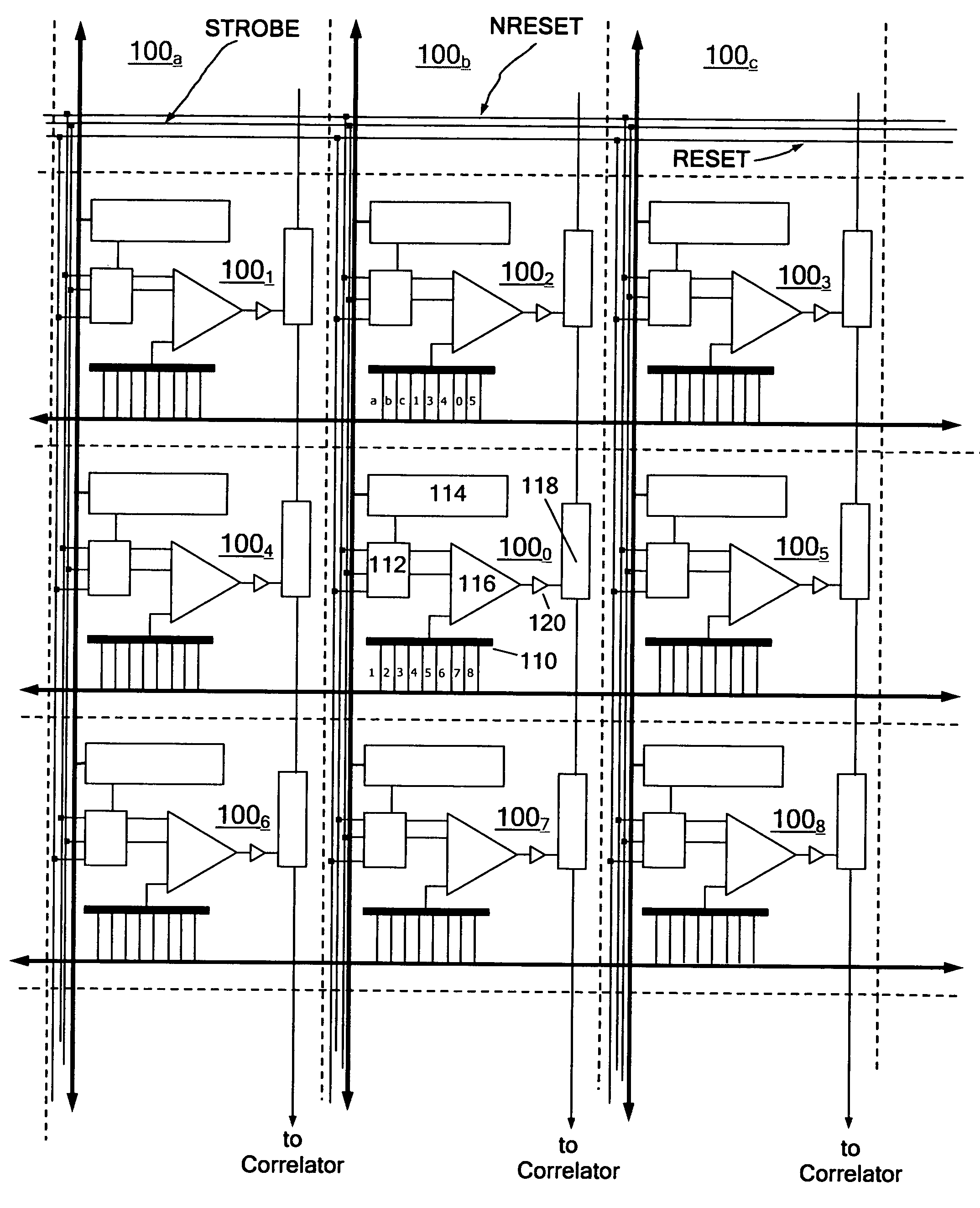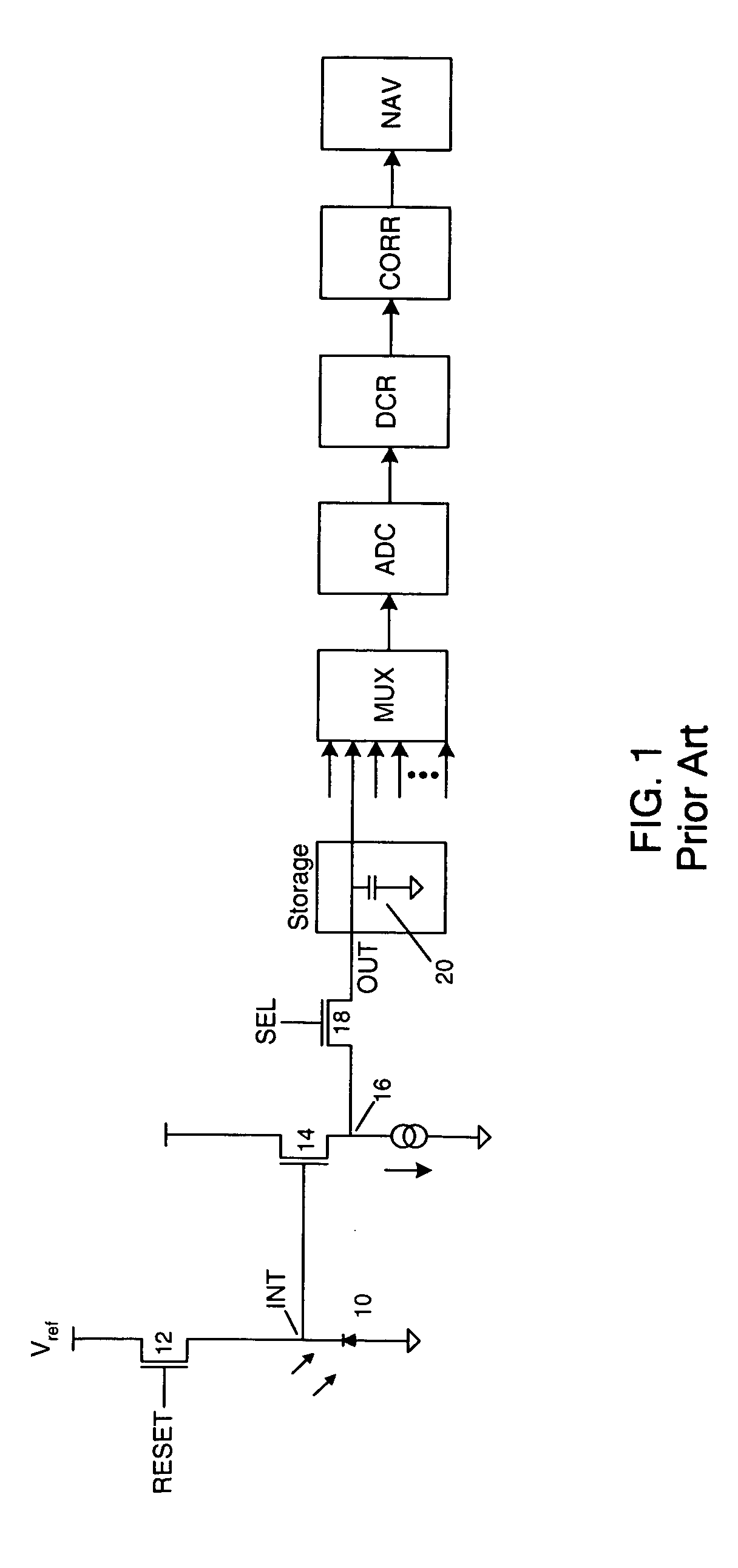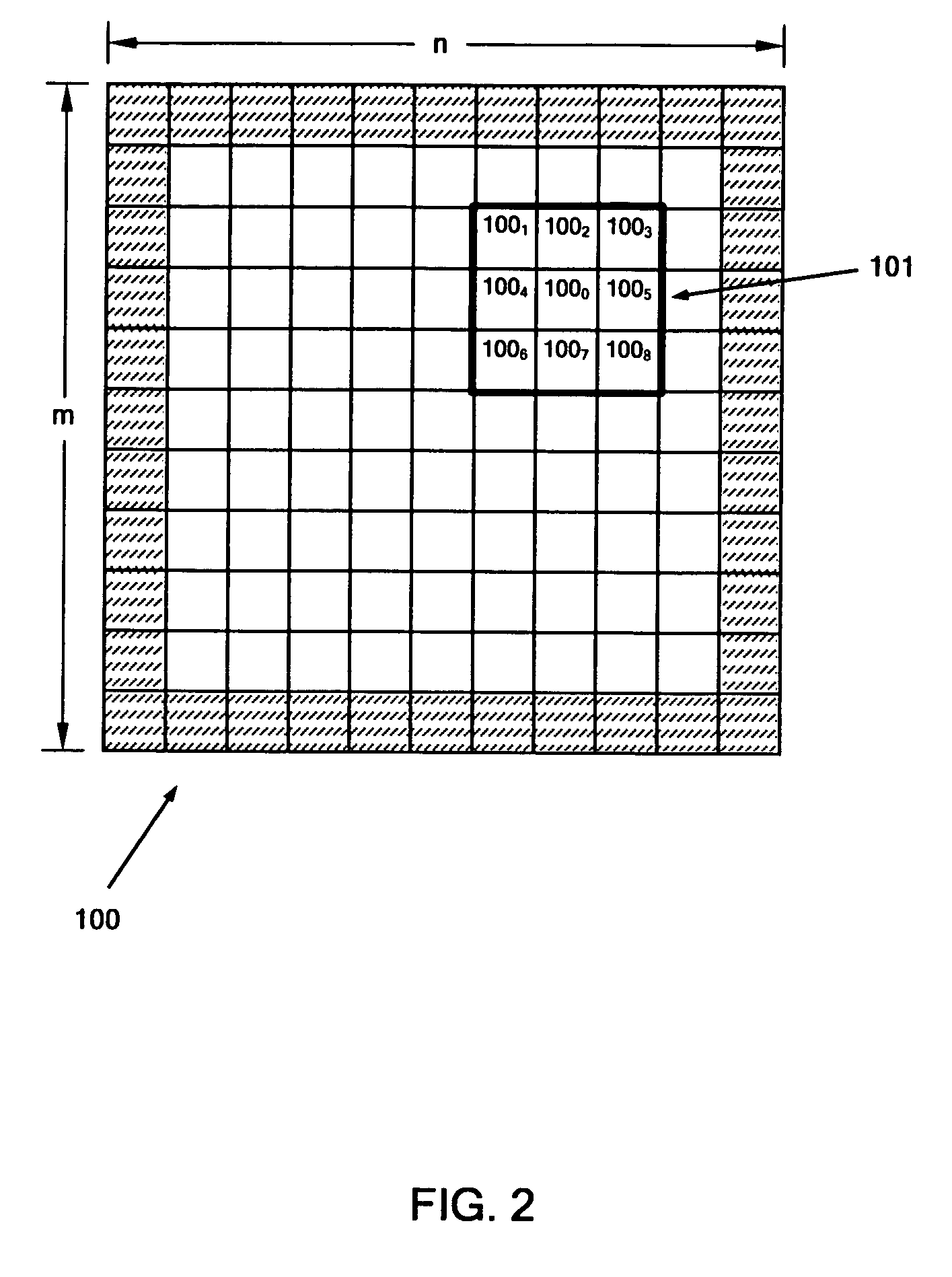Photo-sensor array with pixel-level signal comparison
a photosensor and array technology, applied in the field of photosensor arrays, can solve the problems of increasing cost, storing images, and digitally oriented application specific integrated circuit (asic) technologies, and achieve the effect of reducing the storage requirements of the overall image processing chip
- Summary
- Abstract
- Description
- Claims
- Application Information
AI Technical Summary
Benefits of technology
Problems solved by technology
Method used
Image
Examples
Embodiment Construction
[0024]FIG. 2 is a block diagram of an array 100 having m rows and n columns of pixels. Array 100 (which could be formed as part of an integrated circuit) may form part of an electronic imager. In operation, array 100 may be configured to receive light reflected from a surface (or object), and thereby generate an image of the surface (or object). Array 100 is in communication with a controller device (e.g., additional circuitry on the same IC, not shown, and / or one or more separate processors, also not shown). Except as set forth below, the details of such components are not necessary for an understanding of the invention. Hardware and software (or firmware) suitable for implementation of a photo-sensor array of the invention will be apparent to one of ordinary skill in the art from the information provided herein.
[0025] Highlighted in FIG. 2 is a sub-array 101 of 9 contiguous pixels, labeled 1000 through 1008, at an arbitrary location within array 100. Except as set forth below, th...
PUM
 Login to View More
Login to View More Abstract
Description
Claims
Application Information
 Login to View More
Login to View More - R&D
- Intellectual Property
- Life Sciences
- Materials
- Tech Scout
- Unparalleled Data Quality
- Higher Quality Content
- 60% Fewer Hallucinations
Browse by: Latest US Patents, China's latest patents, Technical Efficacy Thesaurus, Application Domain, Technology Topic, Popular Technical Reports.
© 2025 PatSnap. All rights reserved.Legal|Privacy policy|Modern Slavery Act Transparency Statement|Sitemap|About US| Contact US: help@patsnap.com



